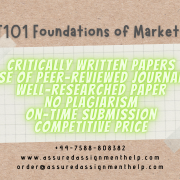Introduction
A trading period refers to the financial transactions which are made within one year of the business. It has been identified that any business needs to predict the business plans and the changes in the internal and external markets, based on which strategic business decisions need to be taken (Maisel and Cokins, 2013). External and internal changes can both impact the business which has to be enhanced owing to the positive and negative impacts which affect the business.
Based on the market analysis and strategic plan which has been formulated by Lions, it is observed that the company selected aims to manufacture cars and vehicles keeping the US market as the targeted market. In this case, it has been assessed that at present the market condition remains suitable for the product which has been evaluated. Based on this assumption, it is identified that a predictive strategic analysis will only help in presenting the business plans as per the needs of the company but also help in mitigating the risks which have been identified.
1. Strategic analysis for each trading period
The changes in the political, economic, social, technological, environmental, and legal aspects of automobile design and manufacturing would lead to an analysis, through which the future risks and changes to be brought about can be mitigated (Maisel and Cokins, 2013). A brief of the six periods has been given below:
1.1.Period 1
The elections in the country have just finished and it has been observed that overall the political condition of the country is stable which directly impacts the political stability of the country and is considered as a product that is not easily affordable, the market for automobiles would not be greatly impacted and the demand and supply for the automobiles would not be impacted. Economically, it is identified that during the next business period, the company would be facing challenges in terms of jobs and employment. Based on the current strategy which is being applied, the jobs being outsourced would be brought back to America, where this would mean that an increase in employment is predicted (Hamilton and Webster, 2015). Subsequently, this would lead to enhanced income and spending capacity for the customers who have been targeted. Technologically, this period suits the business idea where imported cars are being preferred due to the technology being used and in this case, the fact that the technology being used would be expensive to be used in the USA, the market would be fruitful (Ebert, et.al., 2014). Furthermore, the technology being used would increase the suitability of the product in terms of marketing and promotions as well. Environmentally, the impact of pollution gains high importance during the next three years. This means that at present the basic regulations would be applied. Also, with effective supplier relations for the UK, the procurement and manufacturing costs would be retained leading to a higher market in the USA.
As per this period, there will be some changes in the competitive environment such as changes to industry 5 forces. As per the Changes, there might be changes of bargain power of buyers. If there will some changes in the political system then this will influence the standardisation. And Standardisation helps to lower the operating cost which will be beneficial for the company. Lower operating cost means higher will be profit which is also good news and new changes to the internal systems
1.2.Period 2
With the latest policies being adopted by the American Government, it is believed that the country would not be receptive to foreign trade as the latest focus of the country would be towards enhancement of the national business. Hence automobile companies that are US based would be preferred. During this period, at least 25% of the jobs being outsourced would be brought back within the country. This would increase the interest and affordability of the target customer groups (Dees and Brinca, 2013). Also, gradually at this stage, the economic stability of the country would further increase. This would lead to a better demand for the cars and to meet the increase in the demand, it is required that the supply chain is altered concerning the market demand. Technology would support the manufacture and distribution of cars and the customer mindset would be focused on the use of vehicles for family and public use. It is also expected that about environmental concerns, the importance of non-exhaustible resources would be highlighted. This will naturally lead to a change in the mindsets of the consumers also where in the new market vehicles using solar-powered batteries would be introduced as per the plans which are in the pipeline (Ebert, et.al, 2014). This would lead an additional pressure on Lions, in terms of the sustainability which can be incorporated into the vehicles. It is also important to mention that in this period, the competition from local companies such as GMC and FORD would also increase both due to economic stability and the lesser import of products from external markets.
As per period 2 training, the importance of non-exhaustible resources is highlighted. This might help the company as a business can manufacture and produce raw materials by collecting diverse, biotas, and abundant natural resources in gas and coal, uranium, and iron. Even for this, the bargaining power of suppliers will also increase which will make a situation where there will be substitutes for the suppliers. Even for this, the cost of substituting will also be low.
1.3.Period 3
It is expected that the taxation laws in the country would be changed to suit the growth of the domestic markets. Owing to this factor, it is identified that the local business and automobile manufacturers would be preferred as compared with the international players in the market. Till this period, it is expected that the economy would support the business and the cars being manufactured in the UK would have a stable market in the USA (Haltiwanger, Scarpetta, and Schweiger, 2015). This is supported by the fact that with an increase in employment, the spending capacity of the customers would also increase. During this period, a commercial launch of solar-powered vehicles is expected and with support from governmental and economic subsidies, the market for solar-powered vehicles is also expected to gain momentum. Furthermore, because, American Chinese partnerships are also stressed, the high import tax on products from China would further increase import duties on the vehicles. While the customer mindset can be formed with effective marketing and promotion strategies, it is also expected that the country would be able to promote its locally manufactured products and the inclination of the customers towards vehicles from the UK would start declining. In terms of the legal and environmental aspects of the market, it is estimated that legal compliance concerning the environmental impacts would also lead to a decline in the sales of cars powered on fossil fuels and the regulations of pollution and control would be further increased and made stricter (Peng, 2016)
At this stage retaining the competitive edge would be important for the international business, and through strong branding and financial support, the business plan of the company would have to be changed as per the legal and environmental compliances.
As per period 3, it will be the threat of substitutes. In this case, consumers might purchase 2nd hand cars. People might use the bus or any public transport to avoid traffic or maybe cars will get replaced by bicycles. Even there might be the case consumers may start purchasing cars from other competitors.
1.4.Period 4
During this period, a rapid change of political policies for enhancing business links with other countries is expected. This would impact the trade relations between USA and UK which would either be positive or negative in their impact. The effect of this would be directly reflected in the business ties between the two countries. It is expected that this would be the mid-point of the strategic business plan and hence would have to comply with the strong political and economic changes. Three years from now, the state of the developing countries is also expected to change owing to which the increase in the costs of labor would also be expected (Peng, 2016). Also, concerning the labor and manpower charges, the cost of manufacturing the automobiles would increase leading to a subsequent increase in the prices of export and import for Lions. All these factors work against the market dominance of the company being evaluated.
As per this period, there will be rivalry among existing competitors. For example, there will be rivalry among other car manufacturers. As per the analysis, it can be said that Japanese competitors possess cost leadership advantages.
1.5.Period 5
It is expected that the building of the wall between the USA and Mexico would be completed during this trading period. While this would lead to an increased cost of labor, it would also lead to an increase in the prices of the products being manufactured due to higher labor costs. This would ideally increase the price of the cars manufactured in the USA as compared with the cars which would be manufactured in other countries including the UK. Furthermore, with the trade war with China to be expected at its peak, the success of US markets cannot be strongly predicted (Gilpin, 2016). The cost of the commodities manufactured in the USA is low due to cheaper labor and reduced costs due to the outsourcing of the processes. However, at this stage, the rise in the cost of labor and unsuitable trade relations with developing countries would lead to complexities in the supply chain owing to which Lions would have to alter its production and marketing strategies to comply with the demands of the new market. In terms of the new markets to be captured, it is also essential to comply with the change in the technology in the automobile industry which at present is largely focused on the manufacture of vehicles that are solar-powered (Pierce and Schott, 2016). By this time, it is necessary to ensure that the alternative technologies are being used to manufacture the cars such that the customer segments can be targeted whereas the distribution and production channels would have to be aligned as per the changes in the market.
1.6.Period 6
This is the period when the new elections would have commenced and hence the new policies would be drafted. It is expected that at this stage the USA would have a strong economy. With the new elections, the strategies of business and impact on the economy are expected. This means that the global business equation of the country would further change at this time. Also, in the opinion of some economy scholars, it is predicted that the change in the economy would lead to the weakening of the American Dollar owing to which the business equations are largely expected to change (Paterson, et.al, 2014).
Based on the discussion presented above, it is identified that to ensure that the US markets are retained, there is a need to ensure that effective strategic, operational, and business changes are conducted in the business plans to accommodate the impact of the external and internal factors as identified. While there are changes, which can be made in the short-term and long-term plans, changes also need to be made to the business objectives and strategic routes which the business aims to attain.
2. Changes and Adjustments in the short-term plans and strategic objectives
This section aims to highlight the short-term plans and strategic objectives and the changes which need to be made to ensure that the business is not impacted by external changes affecting the business.
2.1. Operations strategies
A change in this strategy would refer to the changes in the production, capacity, and inventory models being used (Grant, 2016). As can be identified from the strategic analysis, it is important to note that the unpredictability of the demand and supply remains a major challenge which can be identified. And to ensure that the capacity, production, and inventory are aligned, the Lean Manufacturing system should be applied, where the production commences with the demand which has been identified. This refers to how the company can align the manufacturing, such that the least expenses on the inventory are incurred and both over-production and under-production should be controlled.
2.2.Marketing Strategies
With the changes identified in the manufacturing and distribution chains, it is also identified that the market demand of the cars needs to be increased for which it is required to ensure that the marketing mix is suitable as per the target segments (Kim and e Mauborgne, 2014). At this stage, it is important to note that the strategies being implemented should position the product as suitable to all markets and not only the USA.
2.2.1. Product
In terms of product alignment, the new vision and mission should also include the aspects of technology which can be used to improvise upon the product such that the cars being manufactured can compete with the new technology and features offered by competitors.
- Price
This would refer to the extensive use of technology to ensure that the least cost is incurred such that the least pricing can be introduced.
2.2.3. Place
Apart from targeting the US market, it is also necessary to evaluate other markets and hence the marketing strategy should also be changed to identify and assess the other markets (Cusumano, Kahl, and Suarez, 2015).
2.2.4. Promotions
All forms of promotions need to be applied to attract the target groups of customers owing to the political and economic stability which creates a potential market in terms of economic viability and affordability.
2.3.Financial management
Even though the revenue background of Lions is stable and the company has the requisite funds which can be used to enhance the business, it is suggested that to use and apply other technological interventions, external funding, and partnerships could be applied. While this would help in ensuring that the targeted markets are supplied with the latest technology and interventions, it would also aid in the research and development which needs to be conducted. Hence it is also required to ensure that external funding and partnerships are formed to sustain through the periods identified (Gilmour, 2013).
2.4.Human Resources
Keeping the present requirements in view, it is identified that the strength and competence of the team are effective. However, at the same time, it is also observed that the competence of the team would have to be continuously refreshed and enhanced, owing to the change in the challenges which have been identified (Talk, 2016). This would largely refer to the training and development of the teams which can be aligned with the expected risks and challenges which can be faced.
2.5.Corporate portfolio of products
Changing the corporate portfolio of products drastically would impact customer satisfaction and branding in terms of the market position which can be attained. In this regard, it is identified that additions and improvisations can be made to the existing vehicles in terms of the resources which are being used. Hence modern technology and aligning the production in terms of renewable fuels would increase the effectiveness of the business strategies applied (Gawer and Cusumano, 2014).
Individual Reflections
This section aims to present the learning experiences which have been derived from working in a team while completing the business simulation. An assessment of personal learning and reflection has been based on the Learning cycle presented by Race, (2014) after an evaluation of Kolb’s learning cycle.
To begin with, this cycle starts from the first step which is wanting. This refers to the area of interest which is generated. It is identified that owing to the increase in the proportionality of the business industry which has been selected, it is of high interest to understand the process of business management and operations through simulation. Simulation has also helped in gaining an understanding of the different methods through which the business can be enhanced concerning the different internal and external factors impacting the business. The biggest advantage of learning through this method is the real-time experience that can be gained through which an actual case scenario is discussed. However, it is also identified that the simulation mode of study which was applied to this business model also helped in deriving an understanding of the various ways in which the different members of the team need to perform collectively.
Once the practical planning was completed, a review of the business plan concerning the strategic changes and objectives was conducted in the next stage of the learning cycle which refers to the doing and the feedback stage. It was identified that to improve the performance of the team members and ensure that all team members would perform to their maximum ability, it was required to ensure that the leadership should be participative. It was also later identified that the choice of leadership should have been cognitive about the sudden changes to be made in the business plan.
A feedback mechanism helped in identifying the changes and lacking which was to be corrected, to ensure that the plan was able to satisfy the needs of the project to the implemented. During this stage, the process of assimilation of feedback and the manner the feedback is communicated was learned and acts as a contributor to the knowledge development of the team members.
Lastly, adhering to the last stage of the learning cycle the recommendations and suggestions were added to the plan whereas the digesting stage was the most fruitful as it helped in ensuring that the plan was made as per the requirements and the information and strategies were not useful were eliminated. This further helped in increasing the cohesiveness of the business plan making it precise and responsive to the situations.
References
Cusumano, M.A., Kahl, S.J. and Suarez, F.F., 2015. Services, industry evolution, and the competitive strategies of product firms. Strategic management journal, 36(4), pp.559-575.
Dees, S. and Brinca, P.S., 2013. Consumer confidence as a predictor of consumption spending: Evidence for the United States and the Euro area. International Economics, 134, pp.1-14.
Ebert, R.J., Griffin, R.W., Starke, F.A. and Dracopoulos, G., 2014. Business essentials. Pearson Education Canada.
Gawer, A. and Cusumano, M.A., 2014. Industry platforms and ecosystem innovation. Journal of Product Innovation Management, 31(3), pp.417-433.
Gilpin, R., 2016. The political economy of international relations. Princeton University Press.
Gilmour, P., 2013. Benchmarking supply chain operations. International Journal of Physical Distribution & Logistics Management.
Grant, R.M., 2016. Contemporary strategy analysis: Text and cases edition. John Wiley & Sons.
Haltiwanger, J., Scarpetta, S. and Schweiger, H., 2014. Cross country differences in job reallocation: the role of industry, firm size, and regulations. Labour Economics, 26, pp.11-25.
Hamilton, L. and Webster, P., 2015. The international business environment. Oxford University Press, USA.
Kim, W.C. and e Mauborgne, R., 2014. Blue Ocean strategy, expanded edition: How to create uncontested market space and make the competition irrelevant. Harvard business review Press.
Maisel, L. and Cokins, G., 2013. Predictive business analytics: Forward-looking capabilities to improve business performance. John Wiley & Sons.
Paterson, T., Clifford, J.G., Brigham, R., Donoghue, M. and Hagan, K., 2014. American Foreign Relations: Volume 2: Since 1895 (Vol. 2). Cengage Learning.
Peng, M.W., 2016. Global business. Cengage learning.
Pierce, J.R. and Schott, P.K., 2016. The surprisingly swift decline of US manufacturing employment. The American Economic Review, 106(7), pp.1632-1662.
Race, P., 2014. The lecturer’s toolkit: a practical guide to assessment, learning, and teaching. Routledge.
Talk, O.M., 2016. Operations management.











